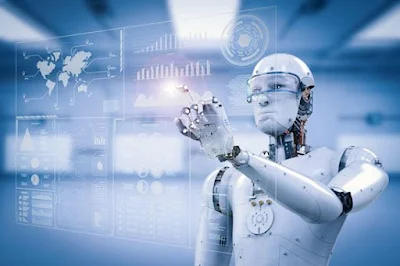Learn more about the synergy between artificial intelligence and robotics
**Introduction: **
The integration of artificial intelligence (AI) into robotics is ushering in a new era of intelligent machines that goes beyond traditional concepts of automation.
It has arrived.
This in-depth article explores the various ways AI is being used in robotics to revolutionize the industry and redefine the capabilities of autonomous systems.
**1. **Sensory perception and computer vision: **
One of the cornerstones of AI in robotics is sensory perception, which is supported by advanced computer vision.
AI algorithms enable robots to interpret visual data, recognize objects, and navigate dynamic environments.
This capability is important in applications ranging from industrial automation to self-driving cars.
**2. **Machine Learning for Adaptive Behavior: **
Machine Learning (ML) plays a key role in equipping robots with adaptive behavior.
Continuously learning from data and experience allows robots to optimize their performance, refine their movements, and adapt to changes in their environment.
This is especially true in scenarios such as robotic arms learning precise movements in manufacturing processes.
**3.**Natural Language Processing for Human-Robot Interaction: **
Integration of Natural Language Processing (NLP) enables robots to understand and respond to human speech.
This is very important in collaborative environments, as robots can receive verbal commands, ask clear questions, and have meaningful interactions.
Human-robot interaction is becoming more intuitive, opening up potential applications in customer service, healthcare, and other fields.
**4.**Decision Making and Path Planning: **
AI algorithms allow robots to make complex decisions in real time.
Whether navigating crowded spaces or optimizing manufacturing processes, robotics uses AI for efficient path planning and decision-making.
This not only improves the accuracy of movements, but also improves the safety and reliability of the entire robot system.
**5. **Cognitive Computing for Autonomous Systems: **
Cognitive computing, a subset of AI, allows robots to imitate human thought processes.
This includes problem solving, pattern recognition, and learning from experience.
This allows autonomous systems to cope with unexpected challenges and adapt to a variety of tasks, making them essential in environments where human intervention is limited or dangerous.
**6. **Collaborative Robotics (Cobots): **
The synergy between AI and robotics is embodied in collaborative robotics or cobots.
These are robots designed to work with people, learn from their actions, and provide valuable assistance.
From medical facilities to manufacturing sites, collaborative robots embody the harmonious coexistence of AI and robotics, augmenting rather than replacing human capabilities.
**Conclusion: **
The use of AI in robotics represents a paradigm shift in the functionality of autonomous systems.
From perceptual computer vision to adaptive machine learning, the integration of these technologies is transforming industries and ushering in a new era of collaborative human-robot partnerships.
As AI continues to evolve, its symbiotic relationship with robotics promises further innovation, ushering in a future where intelligent machines expand human potential in a variety of fields.






No comments:
Post a Comment